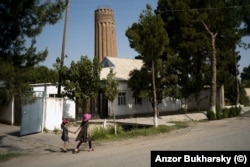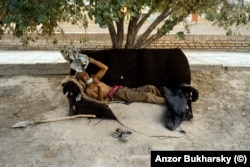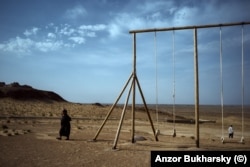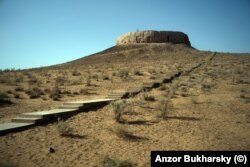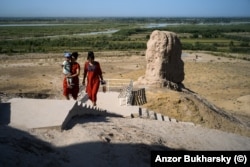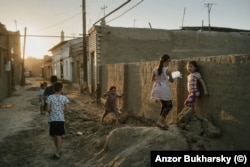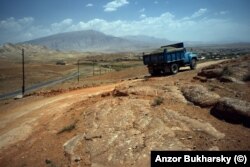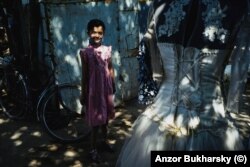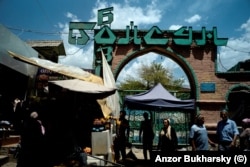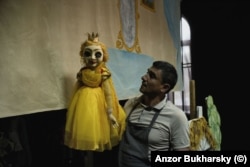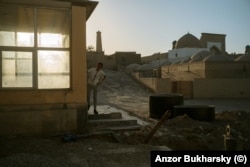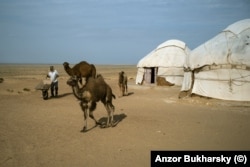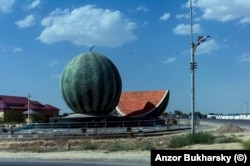A 2,500-kilometer road trip by Anzor Bukharsky, one of Central Asia's most beloved photographers and cultural commentators, offers a rare glimpse into everyday life on the backstreets and byways of Uzbekistan.
These are some of the photographs made during a road trip throughout Uzbekistan in early summer 2021 by photographer Anzor Bukharsky. The Bukhara native is known for his affectionate photographs and sharp observations of Uzbek culture.
Bukharsky made the epic journey to show two visiting Russian friends an Uzbekistan away from the tourist sites where, he says, the authorities have attempted to "improve everything with new bricks and tiles, or decorate with rubbish bins and plastic police booths."
This 2,000-year-old structure was used by fire-worshipping followers of the Zoroastrian religion as a way of disposing of corpses without contaminating the sacred elements of earth, fire, or water. Bodies were left atop this tower, where the harsh sun and vultures would strip them clean. The bones that remained would be placed into jars and buried.
"Every time I visit a city in Uzbekistan, I try to get to the bazaar as soon as possible," Bukharsky says. "With their unique flavor and identity, the open-air markets are the pride of the Uzbek people. Such bazaars have been praised thousands of times in literature, painting, and cinema.
"It's a pity that recently, starting in 2017, a real war has been declared on the Uzbek bazaars. They are simply being razed to the ground and modern hypermarkets built in their place. A whole layer of cultural heritage is disappearing, and I am afraid that it will never be replenished."
Bukharsky believes Surkhandarya has "the most beautiful mountains in Uzbekistan," where "it's truly easy to breathe. You can feel incomparable space and lightness.”
Bukharsky says the original bazaar in Khiva was located at the base of the picturesque city walls but that recently "the city authorities decided that merchants disgrace the appearance of modern Uzbekistan before foreign guests, so the market was moved to another part of the city, hidden from the eyes of tourists."
Bukharsky adds: "The wave of demolition of bazaars has even reached Surkhandarya. When we arrived at the famous old market in Boysun, it turned out that it was closed because it was being transferred to another part of the city to be made 'more modern and beautiful.'"
Bukharsky says "the sands in the desert are constantly shifting, so these containers, which are several meters deep, are made from reeds to stop the highway being buried.
"On the streets of Uzbek cities during any holiday, you will see a huge number of people in uniform: police, military, national guard, and so on," Bukharsky says. "This surprises tourists, and they often ask whether there is some threat to their safety."
Bukharsky told RFE/RL: "It is alarming that in the old cities of Uzbekistan, some kind of restoration or construction is constantly being carried out, often inside the areas protected by UNESCO."
Bukharsky said that by the end of the 12-day road trip he had learned several things, including that away from the main highways, Uzbekistan's roads are "unsuitable for traveling by car -- our roads look like a nuclear war has been waged." But most importantly, the photographer said that after thousands of kilometers, he realized that "there is no better city in the world" than his hometown of Bukhara.
Written by Amos Chapple based on an account by Anzor Bukharsky.

